On October 22, 2020, the latest Autodesk Moldflow Insight, Moldflow Synergy, and Moldflow Adviser releases became available for subscribers!
Some users were able to participate earlier this year in the Moldflow Insight & Synergy 2021 Beta program to help the developers test many of the great new features and functionalities within this latest release. With the extensive testing, we were able to successfully implement many of those features into this commercial release of Moldflow! Here’s a breakdown for some of the new things you’ll see within Moldflow software. If you want just a quick overview, take a look at the What’s New in Moldflow 2021 overview video (links to YouTube), that’s under 3 minutes long to give you a high level overview of the new release.
First we’ll take a look at what is new in both Moldflow Adviser and Moldflow Insight/Synergy. As with each release, we have added additional material grades totaling about 11,500 thermoplastic materials. We’ve removed outdated materials, and continue to support importing your own materials to make sure you have the most accurate representations of your final product.
There have been some minor name changes, such as the Fill analysis now being referred to as Flow analysis. There has been no changes to the solvers there, just a name that better represents the overall process.
Under the pack/hold settings in the process setting wizard, a new Automatic Pack/Hold Profile option is available. This is a new feature that displays an optimized pack/hold profile after running a Flow analysis, which provides more accurate pack/hold settings when transferring your simulation’s settings to the machine.
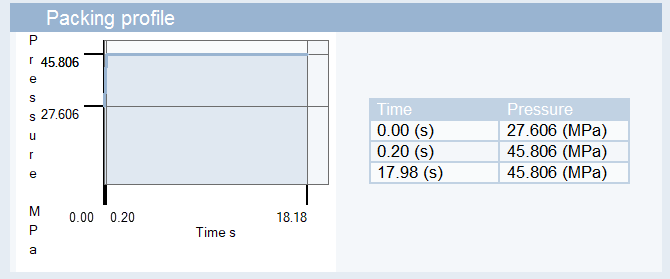
The 3D sink mark results have improved accuracy over past versions of Moldflow. The solvers are now able to capture shallow and wide rib features better on the opposite face.
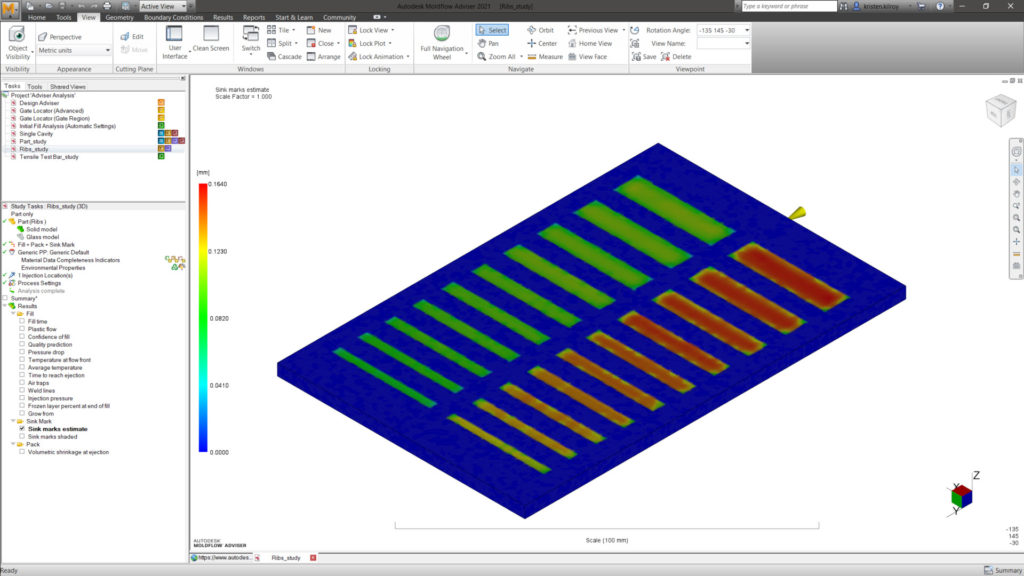
General solver enhancements have also been added for both Adviser and Insight. These include more accurate handling of semi-crystalline materials and better convergence of mold temperature calculations in the cool analysis (especially where channels are close to the surface or part cavity).
Speaking of results, the developers added cool new result viewing options through various preloaded legend color choices. Although it is meant for visually impaired to more easily see flow patterns and other results that can’t be easily seen through log data, anyone is able to take advantage of these (I really like the black>red>orange>yellow one – which one’s your favorite?).
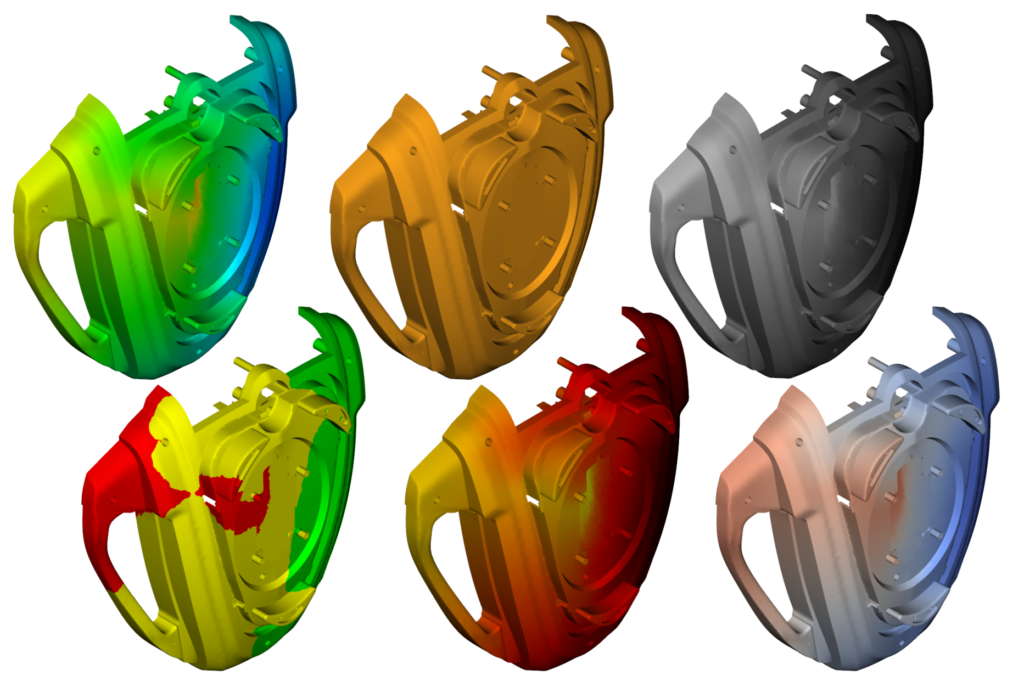
One of the most obvious updates that everyone will experience is the new job manager. The Simulation Compute Manager (SCM) is a browser-based application that has improved solving performance from the old Simulation Job Manager (SJM), while adding a greater ability to share job status and monitor jobs remotely.
This is where we can dig into the new updates for Moldflow Insight/Synergy. The SCM for Insight users has even more control of setting up things like job queues, distributions, and even limiting the number of jobs a system can run. This is especially nice when working with servers.
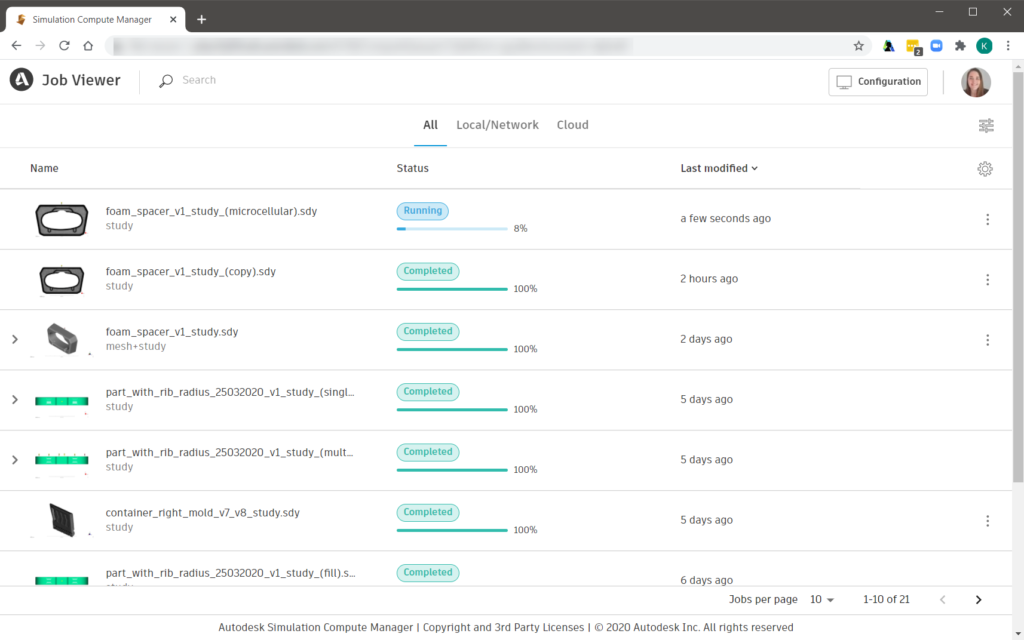
We have updated the permissions of Moldflow Insight Standard users, by opening up access to using the Application Programming Interface (API), or scripting capabilities, for both solver and user interface commands. This provides greater abilities for customization such as custom result plots, data export, and custom report generation. The API for all Insight users also has expanded command capabilities.
Many users have requested a clear representation of the ram position from simulation results so they can better copy process settings into their machines. The developers have implemented a log that details the ram position values. Fill and pack phases of a 3D flow analysis will display these results. Additionally, the result will display with the Pack phase of the Midplane and Dual Domain solvers.
There are two new solver capabilities that anyone working with foam will hopefully appreciate. The first is the ability to run reactive (thermoset) materials with microcellular injection molding processes. Next, the chemical foaming capabilities have also expanded to support reactive materials with a new polyurethane foaming solver. Although polyurethane is the most common reactive material used in chemical foaming processes, there are over 200 others to choose from including various EMC, EPDM, LSR, and rubber materials to name a few.
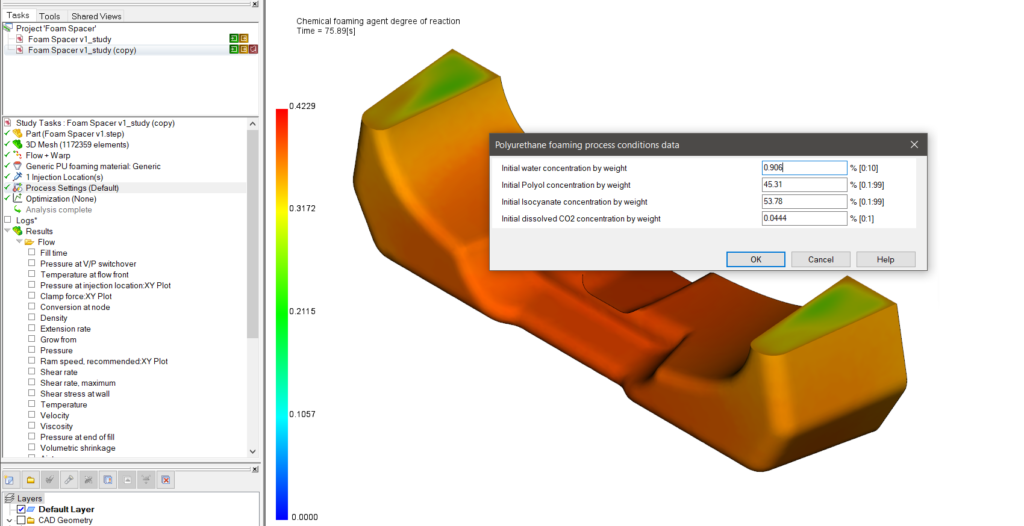
The last feature I’ll mention here is the ability to add retractable core constraints to mold components. This lets you set a time at which that component will retract and therefor have no further impact on the part.
Although it seems like a lot of changes, all of your workflows are the same so hopping into Moldflow 2021 will be as easy as ever!
If you’re an active Moldflow subscriber, log in to your Autodesk Account to access Moldflow 2021. You will need to have a new license file created along with the installation and update to the latest Network License Manager, but if you run into any trouble, make sure you look through troubleshooting guides on the Autodesk Knowledge Network, or contact the Autodesk Support team for direct help. Also, make sure to update your Autodesk Desktop App, which is another way to access your Moldflow 2021 downloads.
For those not on subscription, reach out to your Autodesk partner or sales representative to learn more.
View the What’s New in Moldflow 2021 Overview Video [links to YouTube]>
View the What’s New in Moldflow 2021 Webinar Recording [links to Wistia Video Player]>